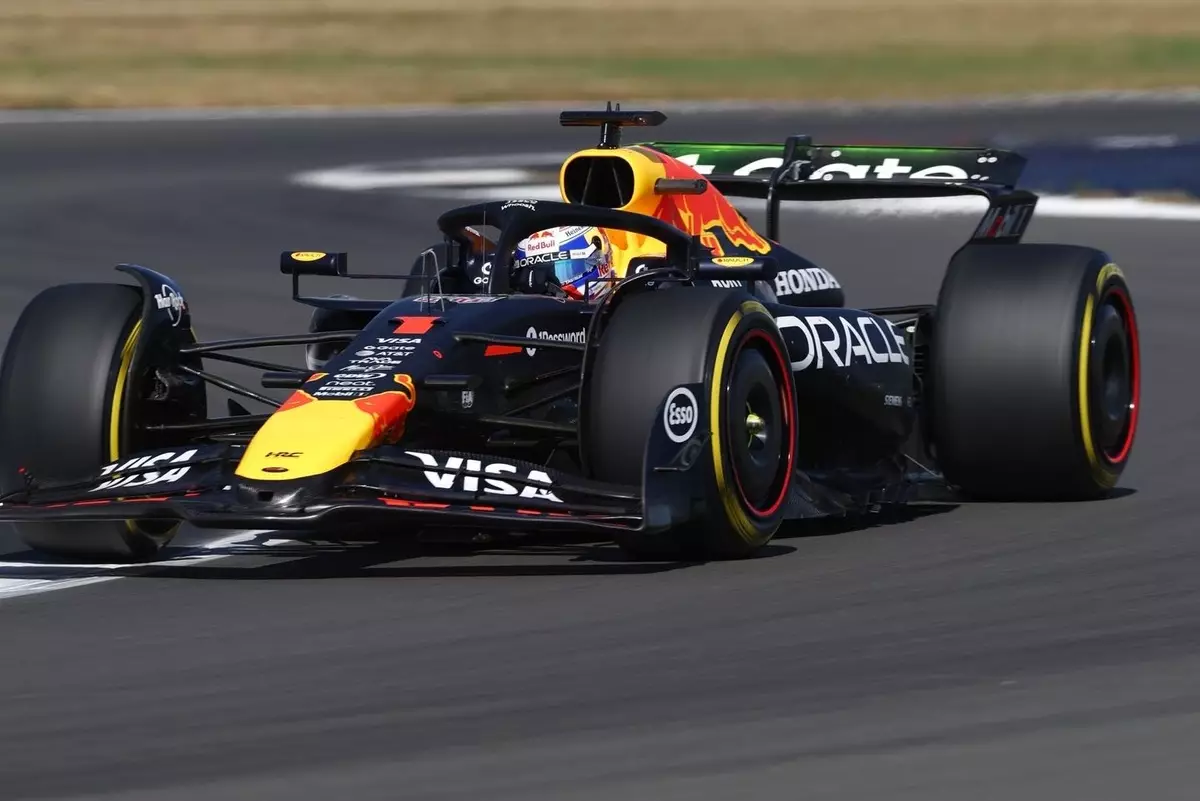In the world of Formula 1, where perfection is often the benchmark, Red Bull Racing finds itself at a crossroads. Max Verstappen, a driver renowned for his relentless dominance, has expressed clear dissatisfaction after recent practice sessions at the British Grand Prix. His candid remarks highlight a team grappling with performance inconsistencies despite its previous hegemonic status. Verstappen’s dissatisfaction isn’t a fleeting emotion; it underscores a deeper systemic issue—one that questions Red Bull’s current trajectory in an intensely competitive season. His frustration, stemming from a car that lacked balance and responsiveness, is emblematic of a team that once set the pace but now seems to be losing ground.
Verstappen’s comments reveal a critical truth: even the most successful drivers are not immune to the pressures of performance degradation and technical setbacks. The fact that he likened his experience to a “bad day” suggests an underlying discomfort that could have long-term implications if not addressed swiftly. His critique that the car is “very difficult corner to corner,” especially given the windy conditions, underscores how external factors magnify internal car dynamics, exposing weaknesses that may have been masked during more favorable conditions. This points directly to the team’s engineering and setup strategies, which appear insufficient in managing the unpredictable challenges posed by Silverstone’s environment.
Weather and Environment: The Unforgiving Enemies of Consistency
Verstappen’s pointed acknowledgment that wind played a significant role in his struggles exposes a broader issue in F1: the car’s susceptibility to environmental variables. While he maintains that wind is “not an excuse,” the reality is that reliance on complex aerodynamic setups makes a vehicle highly sensitive to conditions. This sensitivity can be a double-edged sword—while teams may design versatile cars, their performance often suffers when conditions fluctuate unexpectedly. Red Bull’s apparent difficulty in tuning the car to adapt seamlessly to Silverstone’s gusty wind illustrates that their aerodynamic tools might be falling short.
Moreover, Verstappen’s mention of “lacking a bit of performance” suggests that beyond environmental factors, the team’s fundamental setup and development work are not aligned with their ambitions. As a reigning champion, Verstappen’s dissatisfaction should act as a wake-up call. The car’s poor responsiveness in this critical phase of race weekend practice reveals a potential disconnect between the team’s data-driven approach and the actual on-track performance. In a sport where the margin for error is minuscule, such setbacks threaten to undermine the team’s confidence and, ultimately, its championship aspirations.
Strategic Uncertainty and The Future of Verstappen in Red Bull
While the focus often fixates on performance, the underlying tension surrounding Verstappen’s future adds a layer of uncertainty. Red Bull’s team principal, Christian Horner, has publicly dismissed concerns about Verstappen potentially switching allegiances, specifically to Mercedes from 2026 onwards. However, his guarded tone and mention of “tools” to keep Verstappen satisfied suggest underlying unease. It’s peculiar that a team so dominant in recent years now finds itself discussing retention strategies as if Verstappen’s commitment is anything but secure.
Horner’s pledge to “invest in new tools,” including a forthcoming wind tunnel, indicates an awareness that incremental technological upgrades may not be enough. The reliance on engineering advancements as a panacea might be shortsighted if the core issues—car balance, responsiveness, and environmental adaptability—remain unaddressed. The statement that “we have great strength in depth” sounds optimistic, yet it cannot mask the persistent performance gaps visible during practice. If Red Bull doesn’t elevate its engineering game swiftly, the risk of losing Verstappen—or at least diminishing his confidence—grows.
Horner’s hesitance to definitively commit to Verstappen beyond 2025 underscores a brittle situation. While the current narrative centers around technical upgrades, the real challenge lies in rebuilding trust and ensuring Verstappen’s satisfaction with the car’s competitiveness. In a sport that’s increasingly driven by talent and political nuance, race performance alone may not suffice to retain a national hero of Verstappen’s caliber.
Red Bull today is caught between its past glory and an uncertain future. Verstappen, once an unstoppable force, now voices frustrations that threaten to fracture the team’s cohesion. His candid feedback about car handling and environmental sensitivity should serve as a rallying call for management; yet, how effectively they respond remains to be seen. The team’s investments in technology and engineering are crucial, but so too is their ability to address driver concerns with empathy and precision.
In the end, Red Bull’s challenge isn’t just about catching up to McLaren or reigning supreme on race day. It’s about recalibrating their entire approach—from technical development to driver management—to ensure that Verstappen’s potential isn’t squandered and that their future remains bright. If they fail to do so, the once-dominant powerhouse risks being overshadowed by more adaptive and innovative rivals, with Verstappen’s loyalty hanging in the balance.

